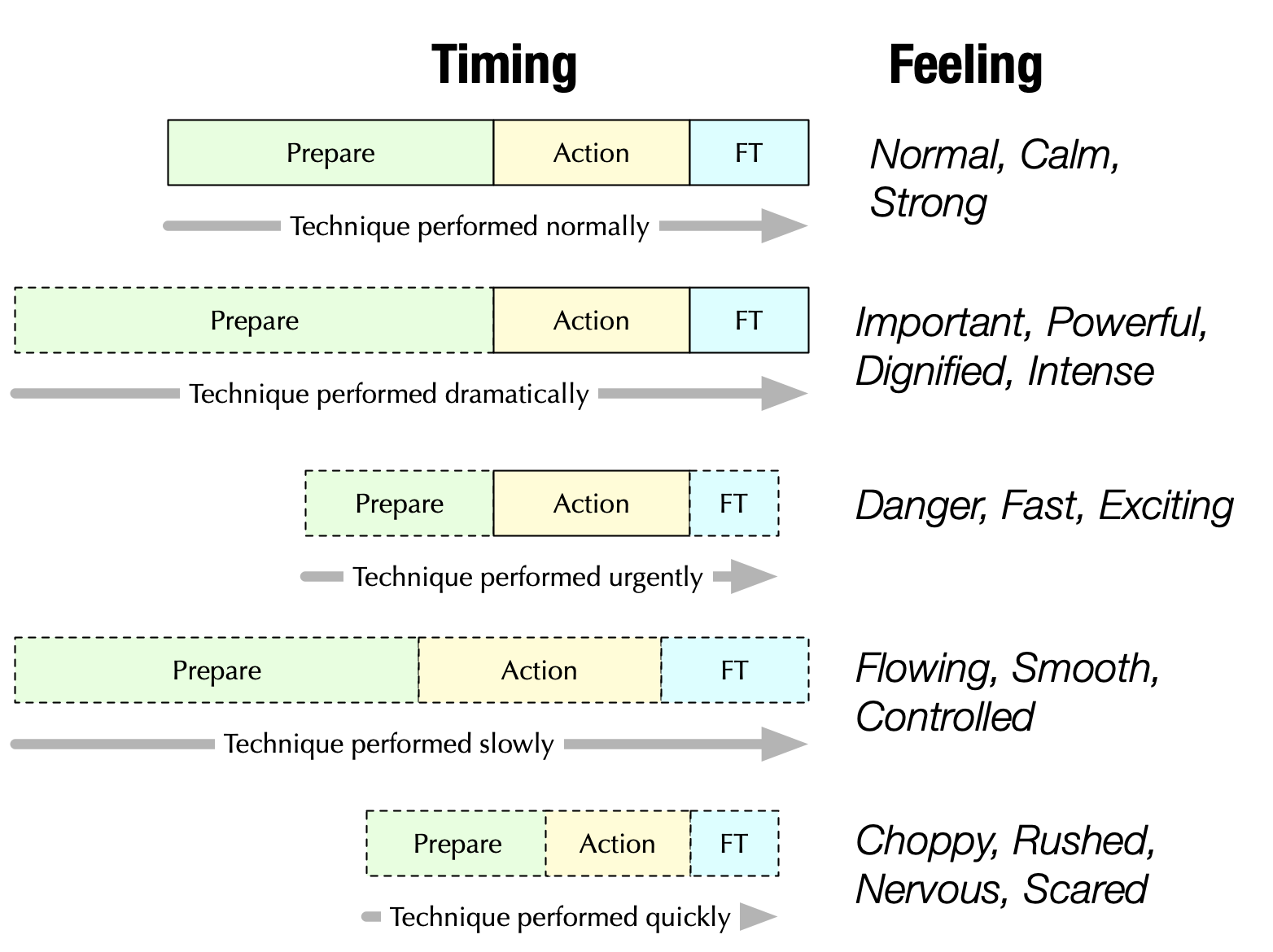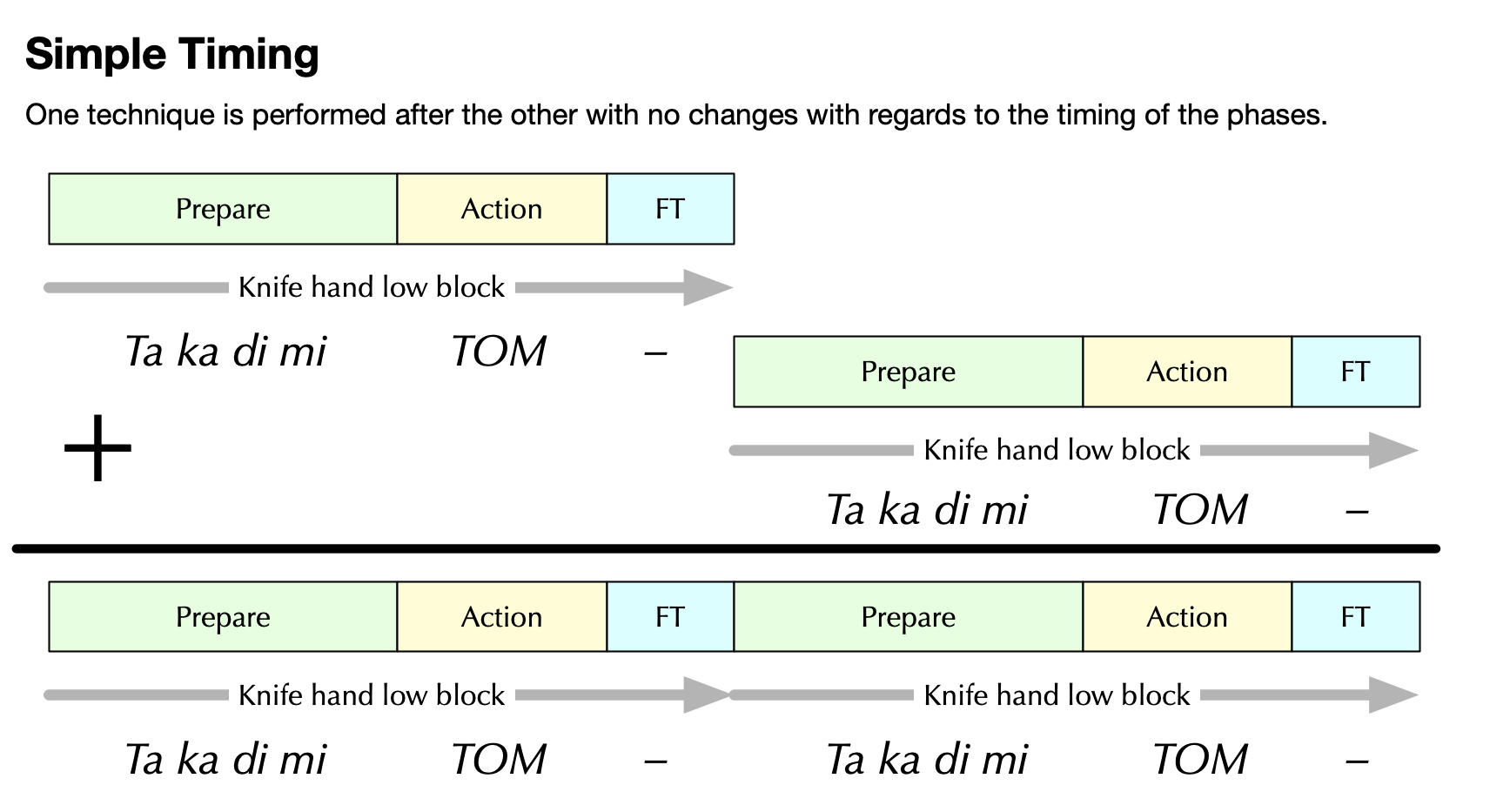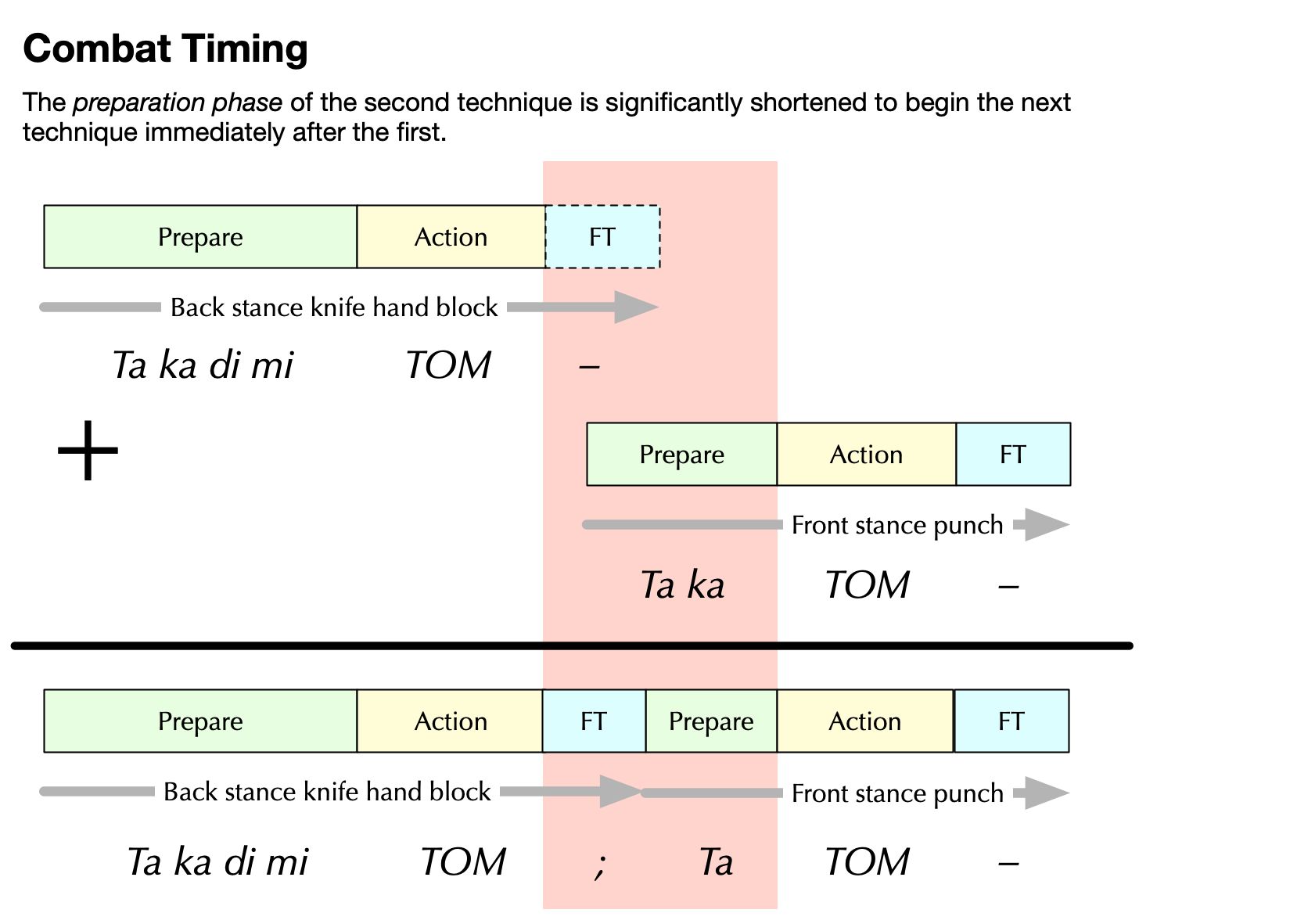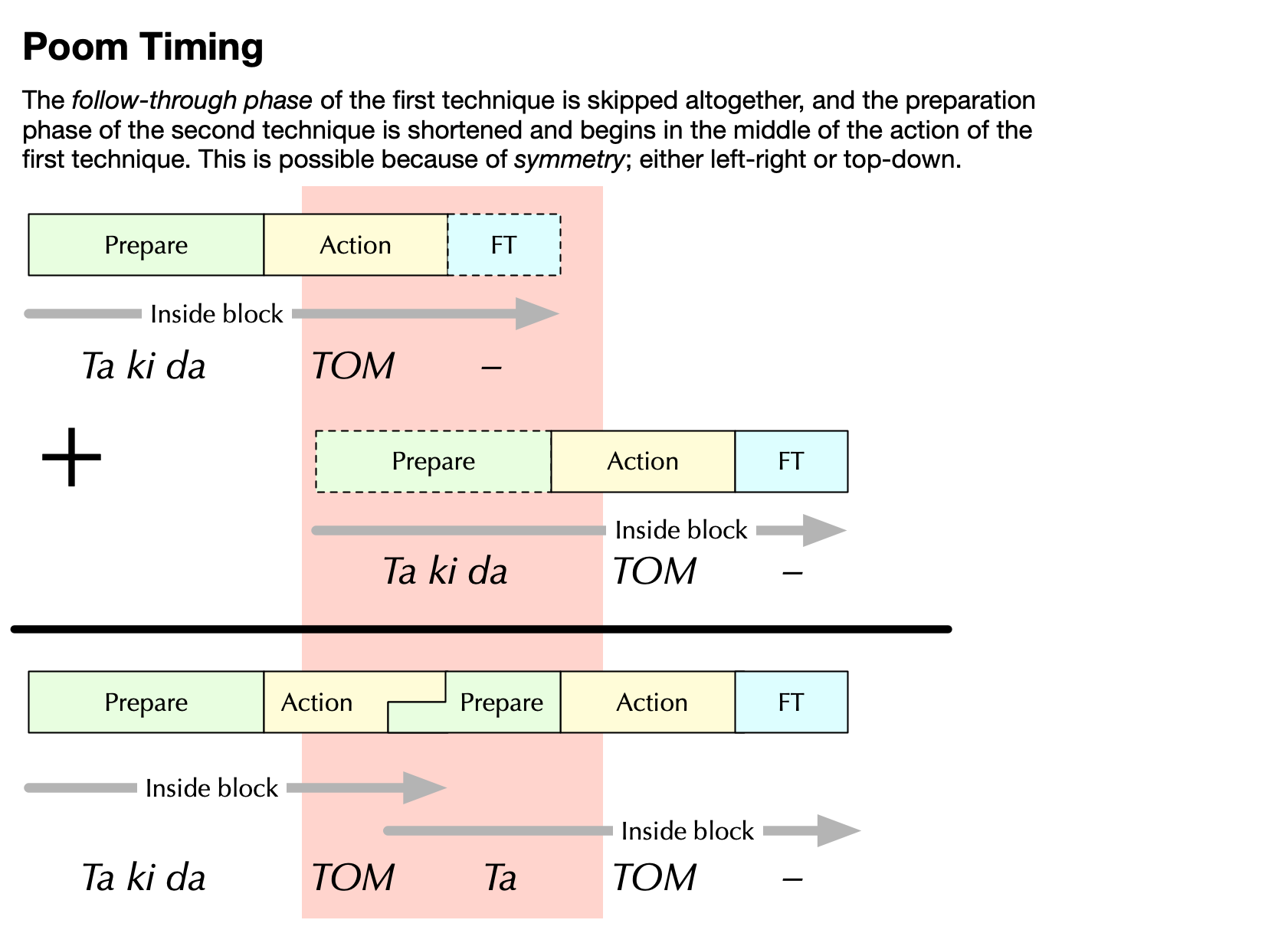Poomsae Timing
By Master Wong
This chapter discusses several key points towards proper competitive poomsae performance. These include: a theoretical framework for correct technical performance using movement analysis, timing notation, and methods for combining techniques in ways that change the performance rhythm and timing.
Movement Analysis: Poomsae Technique Phases
As with many sport movements, Taekwondo techniques have three phases:
- Preparation: Called chambering movement in Taekwondo; movements that lead up to a powerful technique.
- Action: Also called execution; the moment of impact or maximum acceleration of a technique.
- Follow-through (FT): Called recoil for kicking techniques, relaxation for hand techniques, or generally recovery; transitioning from the technique into another technique or a ready position.

Each movement has their own timings for these three phases. Most Taekwondo all blocking movements require that the supporting hand be positioned at the belt, which is the preparation movement for a punching technique. Therefore punches are a fast and natural follow-up to a blocking movement.
Small circular blocks, such as outside block are a little more slow than punching techniques. Large circular blocks, such as down block, high block, inside block, knifehand block, and single knifehand block are just a touch slower than small circular blocks.
Altering the Phase Timings
Techniques can be performed faster or slower than normal, and indeed each phase of the technique can be sped up or slowed down. Performing each phase with different timings changes the feeling of the movement.

By performing each phase of multiple techniques somewhat differently from standard, one can combine the techniques together. This has important implications on certain combinations of techniques. Some techniques work well together with others, leading to useful self-defense applications. In this fashion, high-level poomsae athletes are indicating to judges the depth of their knowledge of potential self-defense applications.
Timing Notation
Master Wong's Poomsae Solkattu system is based on Karnatak Music, similar to Western Takadimi Notation but with greater emphasis on mridangam play and the rich South Indian cultural heritage. Typical phrases for timing include ta for a single beat, ta ka for two beats, ta ki da for three beats, ta ka di mi for four beats, and so on. Strong beats are shown in capital letters to emphasize the moment of impact in a technique, TOM for example.
| Technique | Solkattu |
|---|---|
| Standing Punch | TOM — |
| Standing Double Punch | TOM TOM — |
| Outside Block | Ta ka TOM — |
| Down Block, High Block, Inside Block | Ta ki da TOM — |
| Knifehand Block, Single Knifehand Block | Ta ka di mi TOM — |
Using Timing to Combine Techniques



It may be deeply instructional for athletes to perform combinations of technique using simple timing first, and then explore combat timing or poom timing. As an exercise to test their understanding of poomsae rhythm and even applications, students are encouraged to try not only the movements in poomsae but any other combination they can imagine.
